|
|
Post by nikeajax on Jan 23, 2017 18:20:07 GMT -8
John, I think you'll be happily surprised at just how good they are way down low: the cracking effort is zilch! Hmmm; now that I'm thinking about it, it's like riding a bike, as opposed to driving a car! Less speed means less effort, more maneuverability (low IP-bicycle) Higher speed more fuel more time needed to react (high IP-auto)  JB I didn't mean you personally John, I meant people in general  These old tilt-valves are much maligned, and if they get the TLC they deserve like the over rated USD gear that everyone shuns them for, people might use them more! Let me add that USD gear is good stuff, but there are equally good regs out there that people just won't touch because it requires too much effort on their part! JB |
|
|
|
Post by SeaRat on Jan 23, 2017 19:51:01 GMT -8
Okay, I just went out to the garage, opened up the Scubair, and re-adjuszted the IP to what I think is 90 PSIG. That was pretty easy, and it does breath really nicely. Concerning tilt valves, many don't realize that the Scott Air Lung, with its full-face mask, was a tilt valve. As stated before, my second regulator was a tilt valve Healthways SCUBA Star (I could not afford a Scubair). John PS--How did you know about me and bicycles? 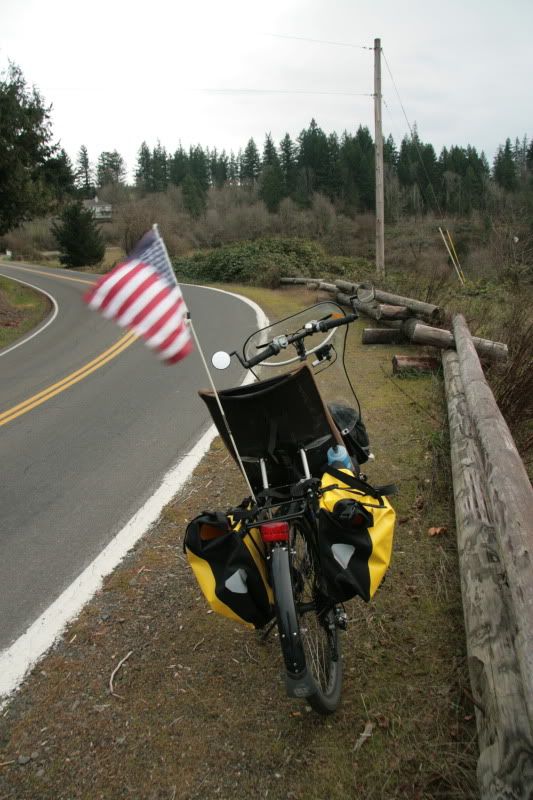 |
|
|
|
Post by SeaRat on Jan 24, 2017 9:04:45 GMT -8
Here's my video on using the Healthways Scubair regulator, and also showing the Sea Turtle/Dolphin method of underwater swimming that I have invented.
John
|
|
|
|
Post by nikeajax on Jan 24, 2017 9:54:21 GMT -8
John, very nice! I'm sure you know that on aircraft, that part is called a "canard": en.wikipedia.org/wiki/Canard_(aeronautics)and on submarines, "diving-planes": en.wikipedia.org/wiki/Diving_planeYour editing skill are really growing! As with writing, you want to be succinct and concise: too much lingering or loitering on a scene and the viewer gets bored: I never felt tired with this film. I have to say, this is actually one of the better pieces I've seen on vintage gear because you show the features and explain how they work.  JB |
|
|
|
Post by SeaRat on Jan 24, 2017 15:23:23 GMT -8
John, very nice! I'm sure you know that on aircraft, that part is called a "canard": en.wikipedia.org/wiki/Canard_(aeronautics)and on submarines, "diving-planes": en.wikipedia.org/wiki/Diving_planeYour editing skill are really growing! As with writing, you want to be succinct and concise: too much lingering or loitering on a scene and the viewer gets bored: I never felt tired with this film. I have to say, this is actually one of the better pieces I've seen on vintage gear because you show the features and explain how they work.  JB I understand the concepts of the "canard" and the "diving plane," but the Hammerhead Unit is somewhat different in both concept and execution. A canard can add lift, and can help steer (up, down, sidewise), but does not add propulsion. Same with a diving plane on a submarine, it provides steering capability, but not really propulsion. The hammerhead unit does both. I have been experimenting with this concept for a very long time, and this year will be promoting it more. Here is one of my first experiments with the concept in 1976. 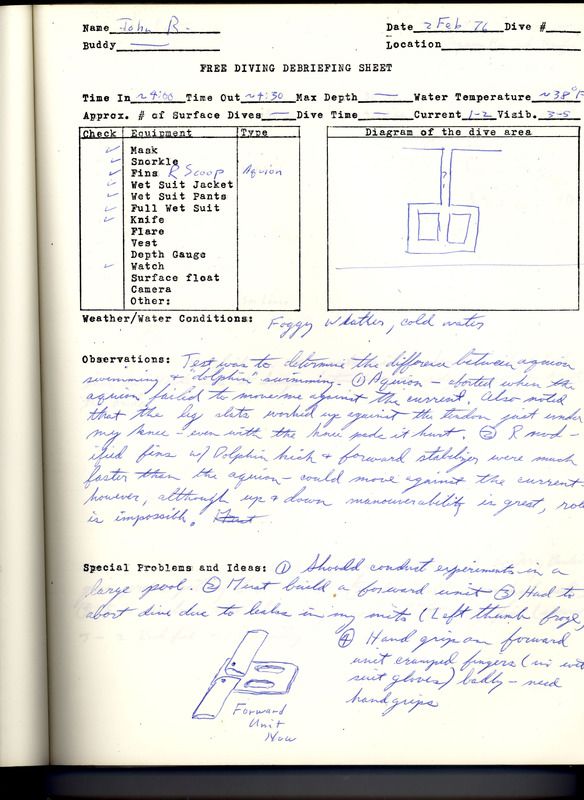 Because this isn't really related to this thread, I'll take further discussion of this concept to another thread. Now, concerning my Healthways Scubair, I pressurized it last night at 1500 psig, turned the valve off but left the regulator attached. This morning, it was down to 1200 psig. So this is now a fully-functional regulator, ready to be put into the river whenever the river and my body are ready for it.  John |
|
|
|
Post by nikeajax on Mar 1, 2017 11:48:08 GMT -8
For 1973, Healthways introduced the Scubair-II and Scubair-II “J” models. The first stages were nearly the same as the Scubair-“B”, but incorporated an end-cap or a j-valve mechanism: they were also considerably lighter than the “B” model because the ¾ of the “B” was solid brass! The end-cap was also modified so that three hoses could be attached instead of just one thus allowing; primary, secondary regulators and a BC-hose. In 1973 HW also introduced the newly modified exhaust-tee in their second stages: this allowed large amounts of exhaust gasses to escape very easily. These tees were also relatively long to channel the bubbles away from the diver’s mask thus reducing the aggravating mask-bounce when air hits the bottom of the mask. I should note that the diameter of the bore is only slightly smaller than that of the US Divers Calypso and Conshelfs of the same period all of which are excellent breathing regs!!!!! JB 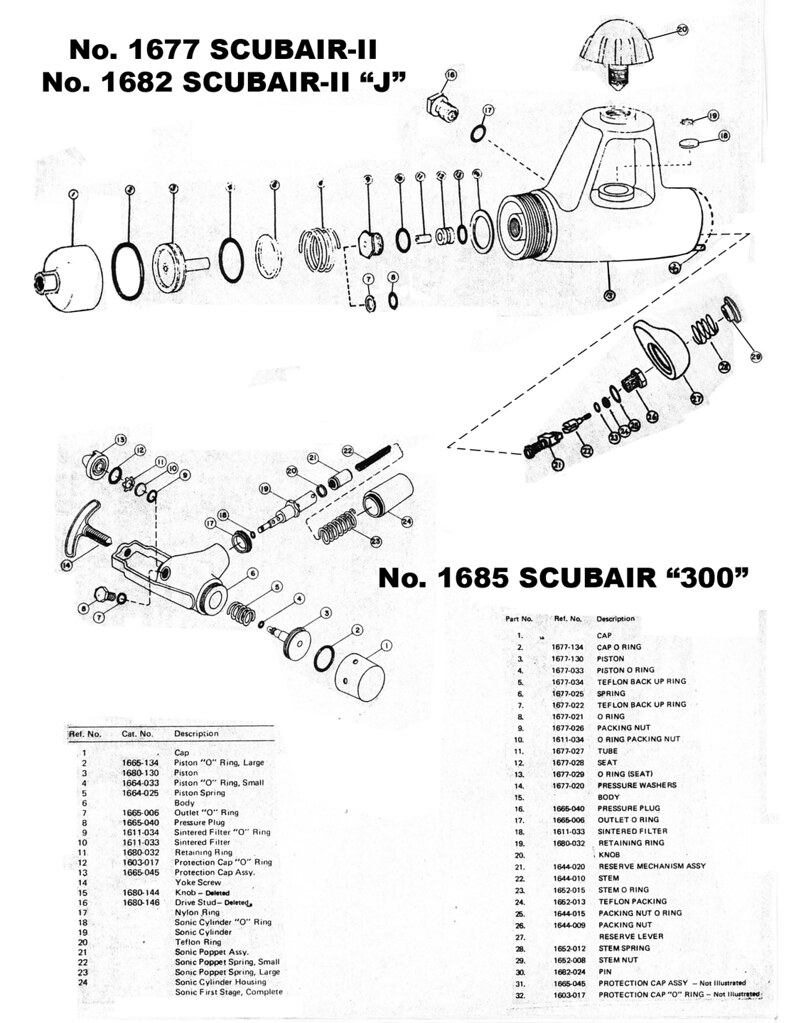 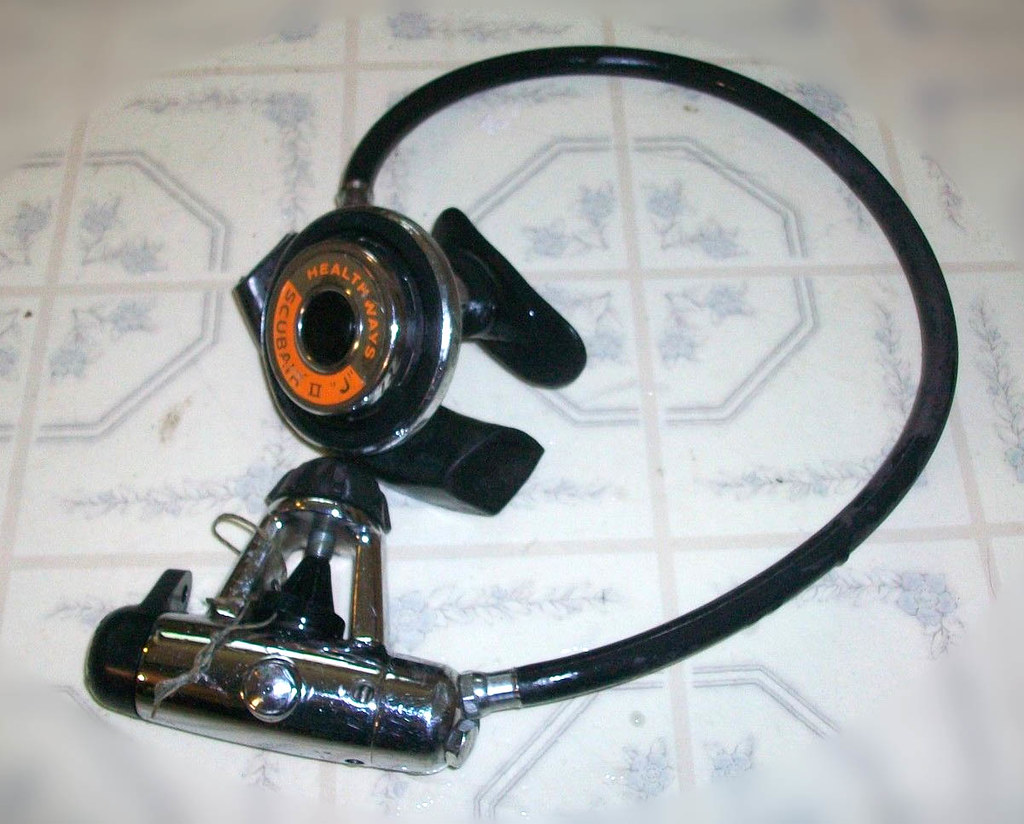 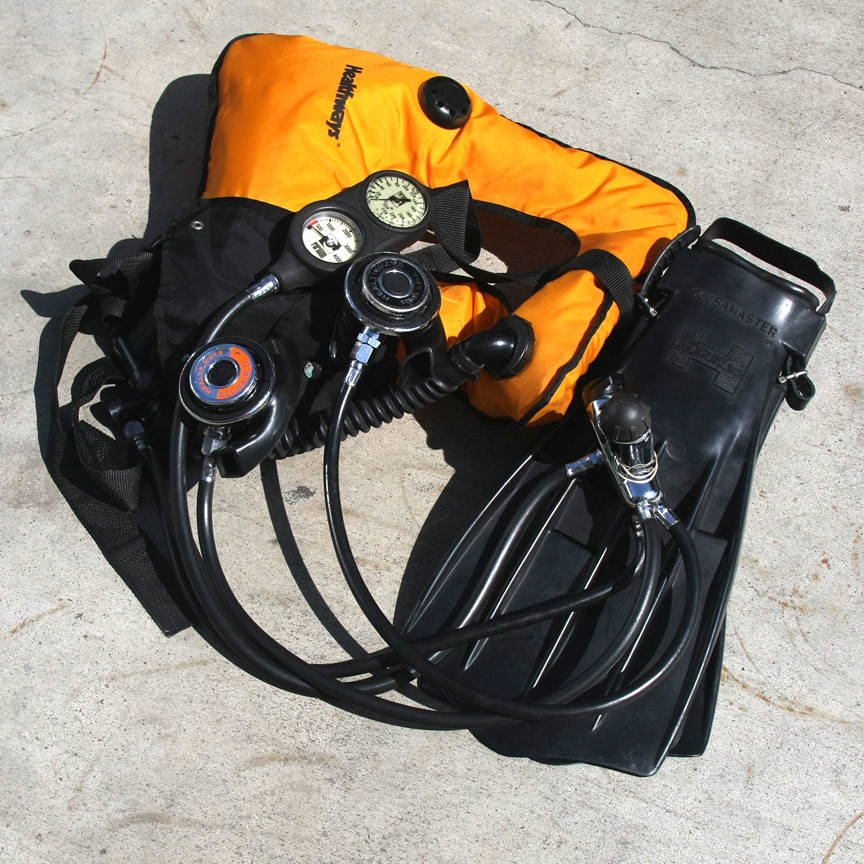 |
|
|
|
Post by nikeajax on Mar 1, 2017 14:44:48 GMT -8
Healthways last regulator was the Scuba Star-II: 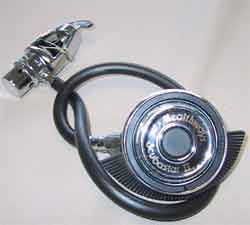 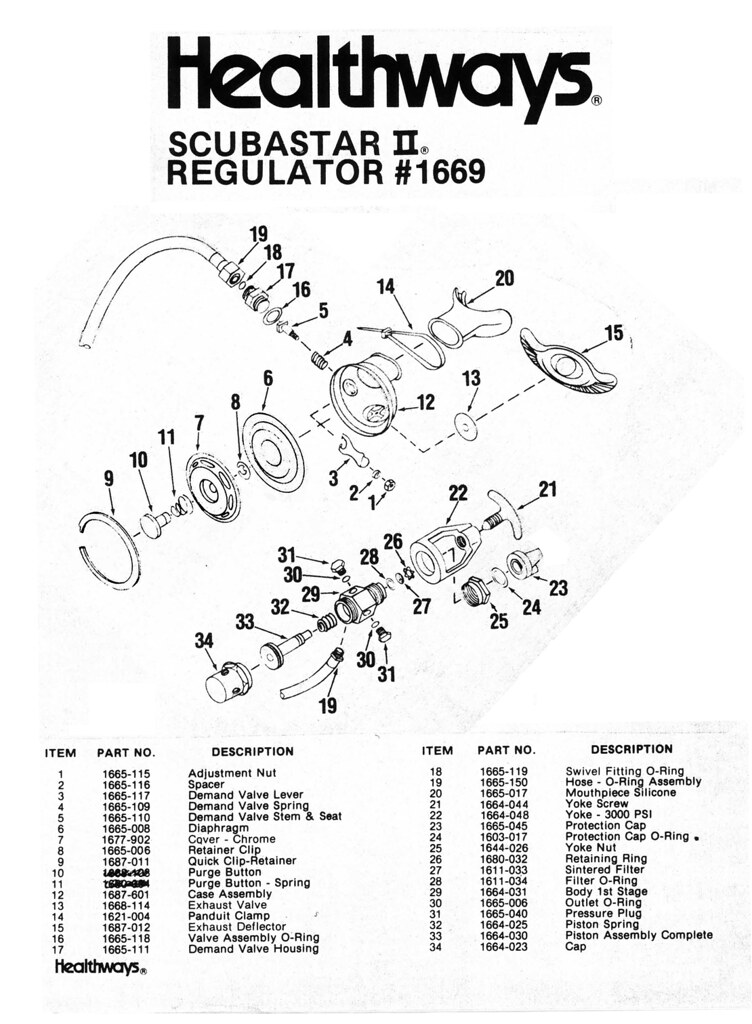 According to the schematic, the first stage had its yoke beefed up to 3K capacity. The second stage was redesigned: the valve body was reshaped to the conical shape used by ScubaPro and soldered into the bottom can and the exhaust-tee and flange got a makeover too, again like that of ScubaPro. Final stop: Scubamaster! JB |
|
|
|
Post by nikeajax on Mar 8, 2017 11:36:04 GMT -8
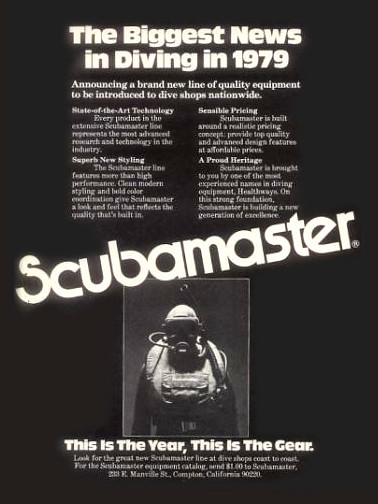 I've never actually seen a Scubamaster, but the fact that they had A: advertisements B: parts schematics, leads me to think that they were real. John gave me some parts sheets which I've doctored up. If you'll notice, the first stage might look really familiar, not as a Healthways, but as the Voit MR-12! The second stage had a venturi nozzle added to the valve body to really give these units a kick. Also of note, the metal cover was replaced and a silicone cover put in that also acted as the purge button! 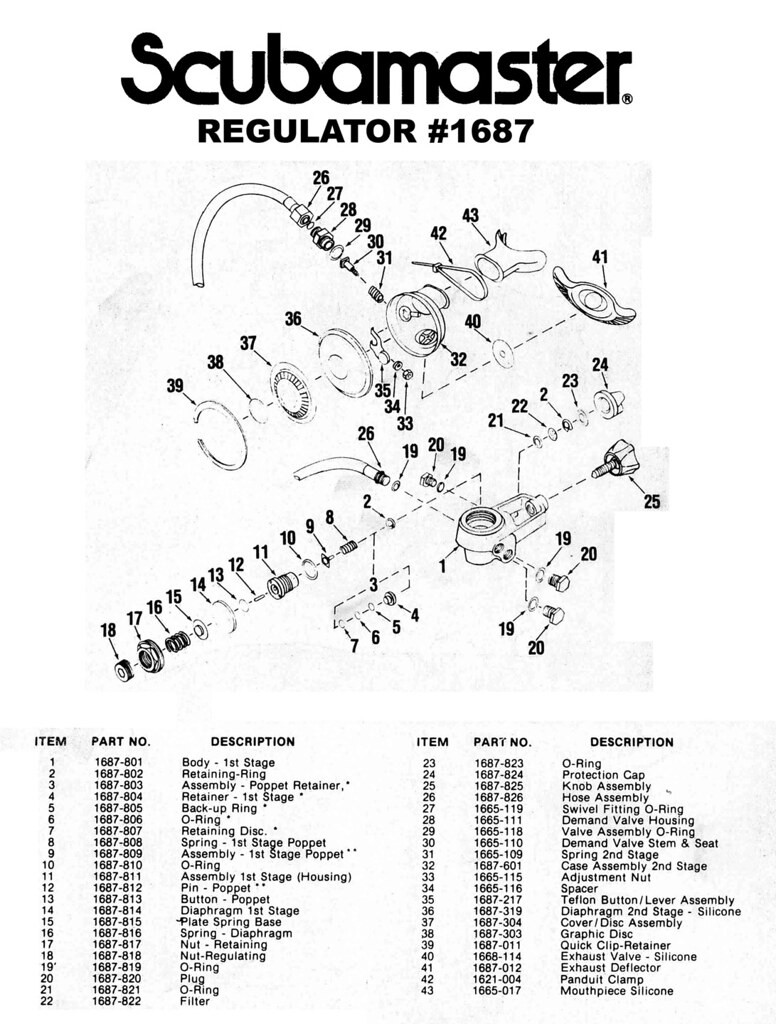 What I do have is an IDI second stage which is virtually the same thing: 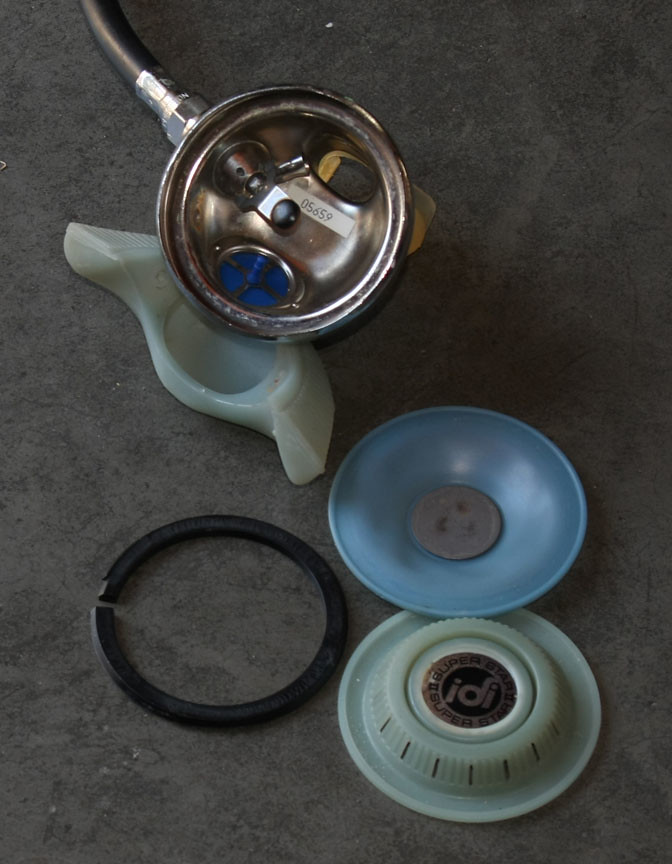 JB |
|
|
|
Post by Aquala1 on Mar 8, 2017 13:04:29 GMT -8
|
|
|
|
Post by nikeajax on Mar 8, 2017 13:32:43 GMT -8
KUTE!  Like the original USD-Calypso, they're low pressure regulators. The Calypso had a poorly designed second stage valve-seat, it was flat and not conical. The HW was a tilt-valve and is actually a nice breathing regulator if you adjust it to 90-psig. Yes, the USD is a better breather just by virtue of it being a down stream-valve. If it is NOS and you wish to use that reg, I'd recommend putting in a 23mm silicone exhaust valve, and gooping that diaphragm up with silicone grease for a while, then massage, beat the heck out of actually like yer tryin' ta get he stain out of a collar. I have one that is so well conditioned that it is nearly as pliable as a modern diaphragm! JB |
|
|
|
Post by tomcatpc on Mar 8, 2017 14:52:13 GMT -8
What about the Airflow reg.? Did you/we cover that one yet? I did not go through all pages yet.
Mark
|
|
|
|
Post by nikeajax on Mar 8, 2017 17:13:46 GMT -8
Yump--I used DD's images too. It starts on Pg.-3...
JB
|
|
|
|
Post by tomcatpc on Mar 8, 2017 20:04:39 GMT -8
OK, Remember it now. Was looking online for it today and did not turn up much on it. Quite different from what I'm used to from Healthways.
Mark
|
|
|
|
Post by nikeajax on Mar 17, 2017 13:37:46 GMT -8
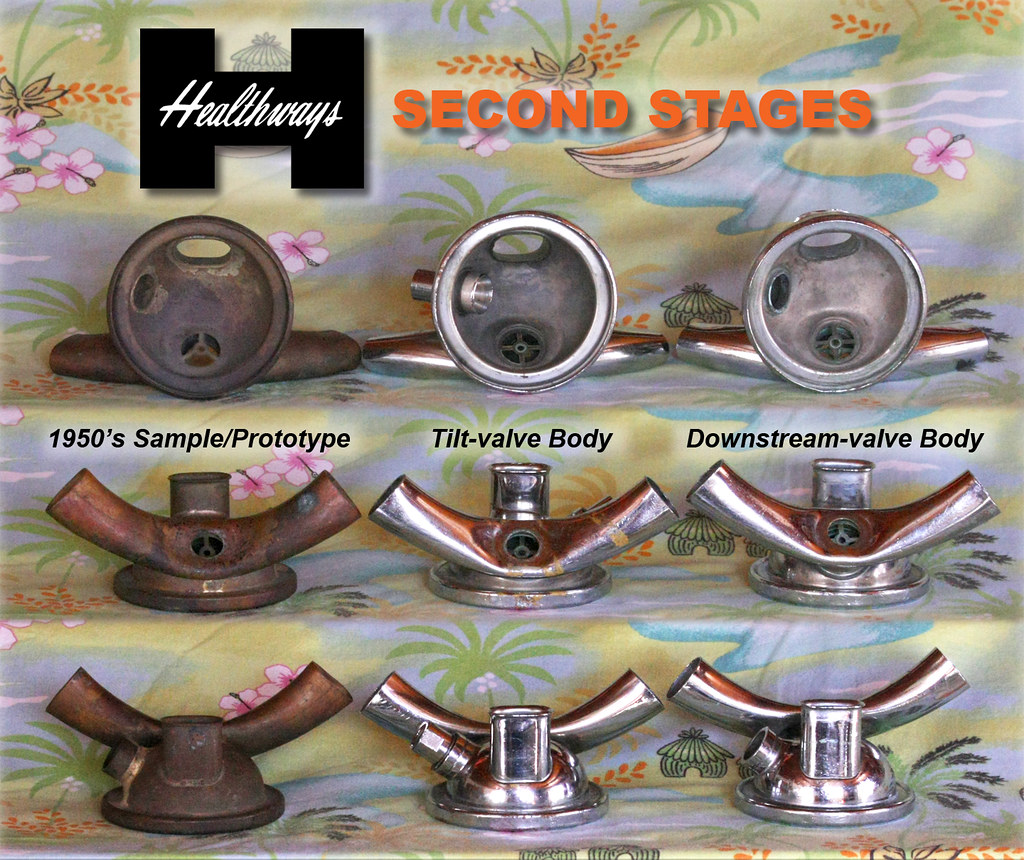 I thought I'd do something colorful showing the progression of the early HW second stages. The proto/sample has lots of little things different than the production model: three spokes for the exhaust port and not extruded, the flange? that holds the quick-klip in is slightly shorter by about 1/32"-ish so the QK doesn't seat in as deep, the mouthpiece tube is shorter by about 1/4"... ohhhh, an' if ya look at the lower left image, you can see two alignment marks on the tube so the knew where to solder it, and look at all that nice sloppy silver solder  JB |
|
|
|
Post by nikeajax on Mar 17, 2017 14:25:11 GMT -8
OK, I know some people would never even consider this, but, here's my HW "Diver Dick", ready for diving! 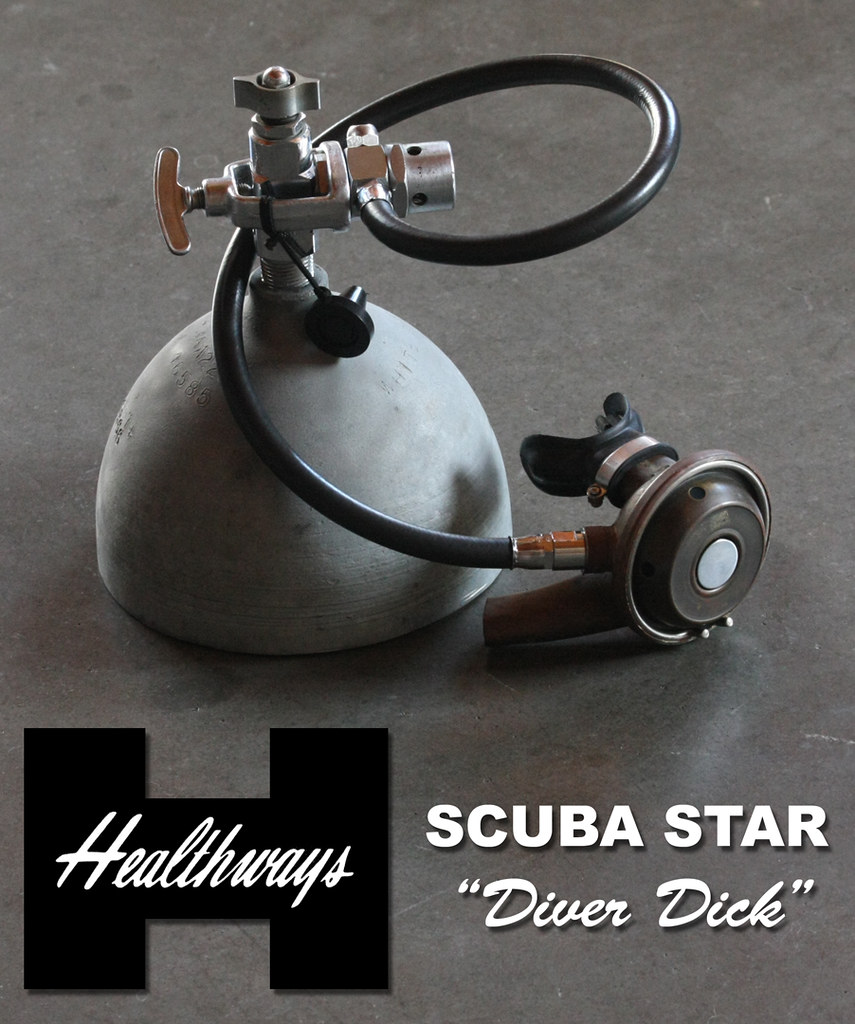 The second stage is a prototype/sample reg. from Dick Anderson's estate. It don't breath half bad neether! JB |
|